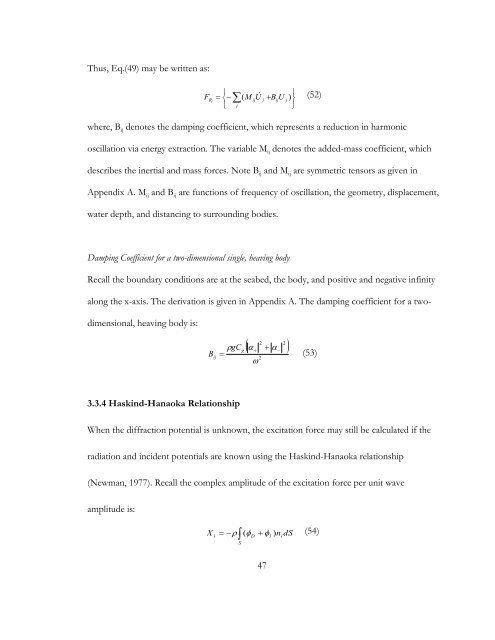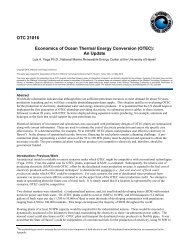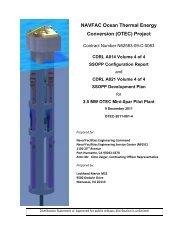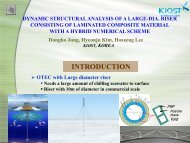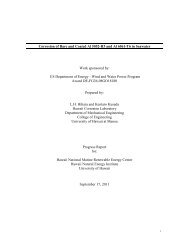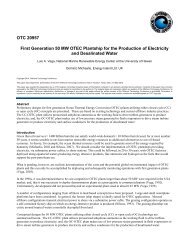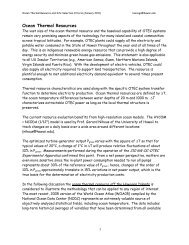MS Thesis R. Hager - Hawaii National Marine Renewable Energy ...
MS Thesis R. Hager - Hawaii National Marine Renewable Energy ...
MS Thesis R. Hager - Hawaii National Marine Renewable Energy ...
- No tags were found...
You also want an ePaper? Increase the reach of your titles
YUMPU automatically turns print PDFs into web optimized ePapers that Google loves.
Thus, Eq.(49) may be written as:FR ( MijUjBijUj) (52)i jwhere, B ij denotes the damping coefficient, which represents a reduction in harmonicoscillation via energy extraction. The variable M ij denotes the added-mass coefficient, whichdescribes the inertial and mass forces. Note B ij and M ij are symmetric tensors as given inAppendix A. M ij and B ij are functions of frequency of oscillation, the geometry, displacement,water depth, and distancing to surrounding bodies.Damping Coefficient for a two-dimensional single, heaving bodyRecall the boundary conditions are at the seabed, the body, and positive and negative infinityalong the x-axis. The derivation is given in Appendix A. The damping coefficient for a twodimensional,heaving body is:22gCg Bij(53)23.3.4 Haskind-Hanaoka RelationshipWhen the diffraction potential is unknown, the excitation force may still be calculated if theradiation and incident potentials are known using the Haskind-Hanaoka relationship(Newman, 1977). Recall the complex amplitude of the excitation force per unit waveamplitude is:X ( )n dS (54)iSD47Ii


